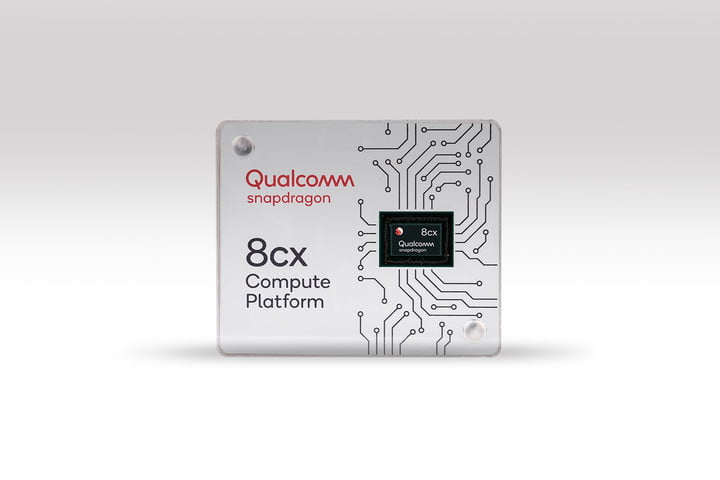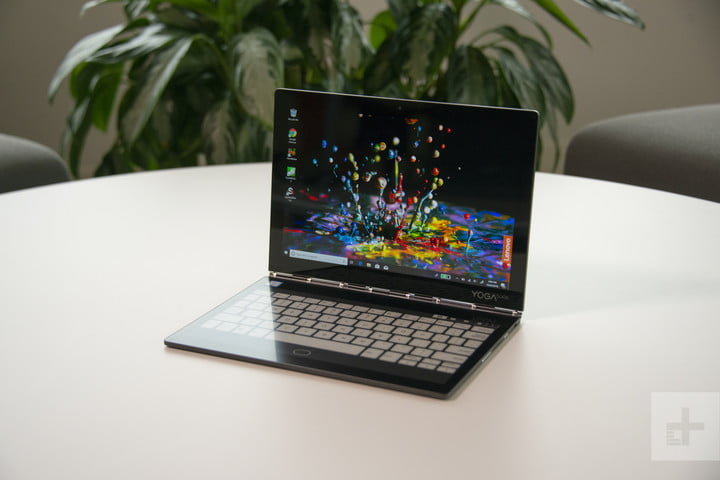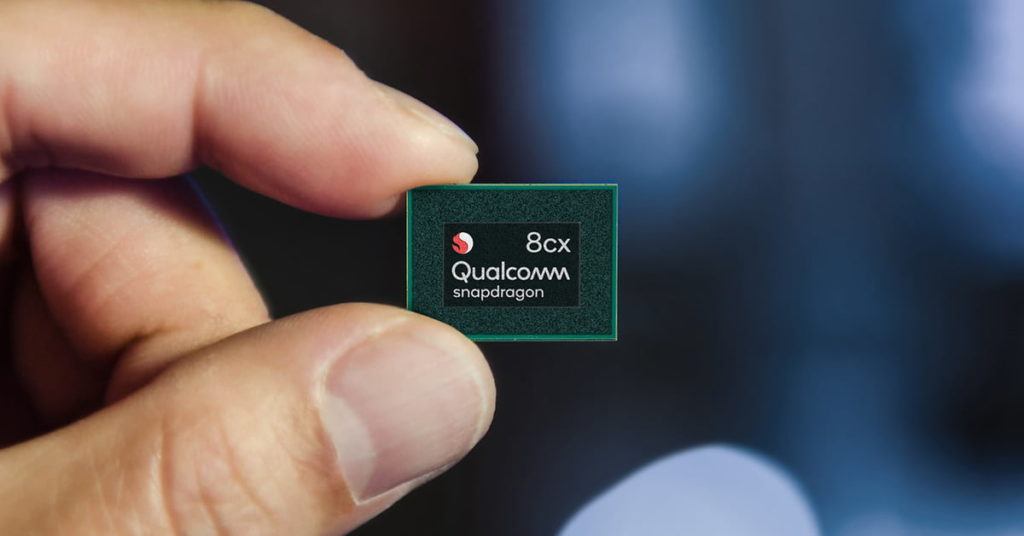Qualcomm Snapdragon 8cx: Doing Windows on ARM Just Right

The PC industry is a business of very old partnerships. They aren’t easily broken.
On a rainy California afternoon in advance of the Snapdragon Summit in Maui, we were granted a glimpse into the inner workings of a company that has become synonymous with smartphones to discuss Qualcomm’s venture into the PC space. It’s a newcomer, plain and simple. Yet against all odds, the launch of the Snapdragon 835 (and 850 follow-up) chipset a year ago is already being used to power devices from HP, Lenovo, and Samsung.
Qualcomm is hopeful its newly-announced Snapdragon 8cx chip will enable even more diverse form factors ahead — ones that compete directly with Intel and AMD on their own terms. This is the story of how Qualcomm, a veteran silicon-maker with little PC experience, is attempting to create a path forward for Microsoft and the future of Windows — exactly where others failed.
Leapfrogging the hurdles
To understand some of the trials and tribulations that went into porting Windows to ARM, senior vice president and general manager of compute products and fifteen-year Qualcomm veteran Sanjay Mehta joined us from the company’s San Diego headquarters to discuss how Snapdragon for PC came to be. “We believe we could help solve the problems of battery life and form factors to make the PC relevant again,” a confident Mehta explained during a Skype call in between rehearsing for his keynote.
Though the Snapdragon 8cx is only the third Qualcomm processor for Windows, following the Snapdragon 835 and 850 before it, Qualcomm and Microsoft have been silently working behind the scenes for some time.
“They launched their initial product with Tegra, but Microsoft had a different Qualcomm project that was about to launch when they decided that RT was effectively cancelled,” Miguel Nunes, a senior director of product management at Qualcomm said. “They had planned to switch to Qualcomm, but they didn’t because they decided as a whole that RT just stopped.”
The roadmap to bring a full Windows experience to ARM began in 2013, with Qualcomm and Microsoft prototyping devices before formally announcing the partnership in December 2016. “I think it was very evident from their standpoint and our standpoint that this is a good time to get married,” Mehta said. Qualcomm felt that it had the technology to address the pain points of the PC industry: Long boot-up times, hunting for hotspots, bulky and heavy devices, and short battery life.
Qualcomm felt that it could make incremental investments to port Windows to ARM to reduce its investment risks. This strategy became clear with the launch of the Snapdragon 850 last year, a chipset that shared the basic architecture as the phone-based 845 chipset.
“We’ve helped to enable a two-billion unit smartphone market,” Mehta explained of the strategy. “All the core IP ingredients in enabling cell phones is going into the adjacent space of our compute platform. So the risks associated with this is specifically tied to the incremental costs of the SoC as well as the investments around the PC, such as the apps ecosystem enablement.”
A modern PC for the mobile world
There’s been a lot of talk about the post-PC world we live in — and not a lot of answers about how these older platforms will adapt. Qualcomm’s experience in mobile is a big reason why Snapdragon on PC has had some success while previous efforts, like Windows RT, flopped. Always-on connectivity taken from phones is an important way that Qualcomm is making Windows more mobile.
“The use cases have evolved to become mobile-centric, and there’s nobody better than Qualcomm to work on these devices,” Mehta added. With Microsoft focusing on cloud services, the need for connectivity is an important driver for this partnership. “If you believe in the long-term model that everything is managed and processed in the cloud, you’re going to need devices that hit the cloud that will be secure, and we believe our solution is perfectly fitted for that.”
To drive the mobile future for PCs, Qualcomm is leveraging its technology to price Always-Connected PCs more aggressively. “One major advantage that we bring to the pricing decision of consumers is the fact that LTE is embedded and not an incremental cost as you see on competitor offerings,” Mehta said. “We plan to enable a roadmap to cover multiple price points to give consumers more options.”
Mehta and his team also highlighted the benefits of Qualcomm’s technology investments to enable many of the platform’s benefits, including instant-on, long battery life, and thin and light form factors. These advantages would make Qualcomm’s chips a natural fit for emerging dual-screen form factors like the Lenovo Yoga Book C630 or even Microsoft’s mystery Andromeda device.
“Technically, if you look at the screen, it’s the number one consumer of power on a system,” Nunes explained. “In an Intel solution, they already don’t have great power with one screen. When you have two screens, it’s not going to be great. That’s why those products won’t ever come to the market because power consumption-wise, it’s going to be dreadful.”
On the other hand, with the Snapdragon 8cx, Qualcomm is boasting just half the power consumption. “When those form factors are ready, we believe we’re going to offer a much better solution because of size, power, and thermal benefits,” he added. All this is driven largely in part by the degree of integration on the Snapdragon chipset. “if you look at all the stuff that we integrate into a chipset — that level of integration allows for critically smaller devices.”
Bringing the best of the PC to ARM
Though Qualcomm is focusing on productivity and enterprise features with Always-Connected PCs, the company could expand to workstations and gaming. “I don’t think it’s something that we’ve considered doing in the short-term but anything is possible in the future,” Mehta said about a gaming Snapdragon PC. While many of the ARM-based games are primarily played on a smartphone today, Qualcomm hopes that it could play a role in bringing some of these experiences to a PC environment in the future.

Bringing more content to Always-Connected PC will help make the platform a compelling choice for consumers. The lack of apps was something that led to the fall of Windows RT. To avoid repeating the same mistake, Microsoft and Qualcomm had worked together to create an emulator to allow legacy apps to work on Snapdragon-powered devices, and the companies are building tools to help developers port their apps.
In the near future, Mehta said, users can expect to see browsers like Google’s Chrome and Mozilla’s Firefox available on Snapdragon. Until then, those missing applications will be a thorn in Qualcomm’s side. However, it’s clear the company knows those complaints well and has a plan in place to make it happen.
A roadmap for the connected computer
Qualcomm has an aggressive roadmap planned for Snapdragon on PCs with a tiering strategy to address the high, mid, and low market moving forward. “You’ll see a multi-tier strategy — it’s not a replacement cycle, but an augmenting cycle where we’ll have multiple tiers supporting PCs that will get refreshed,” Nunes said. “We know we need multiple tiers and multiple solutions to create diversification on devices, price points.”
“There is no rule of thumb, however our goal is to have several tiers of chipsets at different price point and functionalities,” Mehta clarified. “Existing chipsets will waterfall down as new generations and variants launch. 8cx will be our leading premium chipset.” In working with partners, Qualcomm provides support and offers guidance for thermal and board designs, and it is ultimately up to its OEM partners to make the final design decisions around the product. In our interview, Mehta and Nunes appear bullish that we’ll see new aggressive form factors in the near future that will be powered by Snapdragon.
Given that Qualcomm is now just in its second full year in the PC market, it’s quite astonishing that traditional manufacturers — like HP and Lenovo — have embraced the platform, and enterprise adoption of these devices is also growing. Even though Qualcomm didn’t quite capture Microsoft as a hardware partner – the Surface Go was initially rumored to debut with a Snapdragon chipset but that didn’t pan out – some of the biggest names in the PC industry are already building devices using Snapdragon today. And many more enterprises are using products powered by Qualcomm.
“It’s not just us — if you go and talk to ARM, all their executives are using Snapdragon on PC products, and they’re pumped about it,” Bernie Fernandes, a senior PR manager at Qualcomm said. “You go and talk to Symantec, their chief architect is using it, and he loves it. You go talk to Lenovo, and they love it. There are quite a few influential people who are looking at this now and it adds some legs.”




